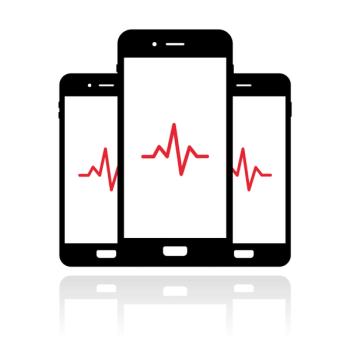
Medical home pros and cons for small practices
The hard work and cost of becoming a PCMH will benefit practices as they begin value-based pay.
Internist Michael Soppet, MD, part of an eight-physician internal medicine practice in Dothan, Alabama, achieved recognition as a patient-centered medical home (PCMH) in 2011. Recently, however, he and his partners opted not to apply for renewal.
The practice could no longer afford to fulfill all the requirements of a PCMH and go through the time-intensive recognition-renewal process after a major payer dropped its care management fee, says Soppet. Previously, the practice had been receiving a per-member-per-month fee in addition to enhanced fee-for-service payments under a Blue Cross Blue Shield of Alabama PCMH pilot project.
Like many physicians, Soppet and his partners embrace the principles of the PCMH but struggle to make it work in a fee-for-service environment. However, the Medicare Quality Payment Program-part of the Medicare Access and CHIP Reauthorization Act of 2015 (MACRA)-may offer an alternative for Soppet and others. The program, slated to start in January, outlines two incentive pathways for practices: the Merit-based Incentive Payment System (MIPS) and Advanced Alternative Payment Models (APM).
To sustain a medical home practice, smaller practices should look to participate in the Medicare program or to collaborate with payers that offer financial incentives above and beyond fee-for-service reimbursements, says Yul Ejnes, MD, a general internist with Coastal Medical in Cranston, Rhode Island, who chairs the National Committee for Quality Assurance’s (NCQA) PCMH 2017 Advisory Committee.
“You can’t run a medical home practice on a purely fee-for-service basis,” he says. “You have to have financial support from payers and look for affiliations with others to share costs.”
The Medical Home Model
The NCQA launched its PCMH program in 2008 and it has become the main path to recognition for practices across the country, although some private insurers and state entities also offer certification (see sidebar). Specific criteria vary, but generally the model emphasizes team-based care and using electronic health records (EHRs) to track progress and outcomes and coordinate care across providers
Nitin Damle, MD, whose eight-physician South County Internal Medicine in Wakefield, Rhode Island, became an NCQA-certified PCMH in 2010, views certification as a step towards improving care for his patients as well as securing the long-term financial health of his practice. “We saw this as a better model for patients and for our office,” says Damle, who also serves as president of the American College of Physicians. “We’ve improved our workflows and efficiency and increased both patient and clinician satisfaction.”
Damle adds that with those improvements already in place, the practice is well set up to receive incentive payments initially under MIPS and eventually qualify as an APM.
To get to its current state, it was essential to have financial backing from payers to help build and maintain an infrastructure, he says. Damle’s practice is part of the Care Transformation Collaborative of Rhode Island, under which the state’s major private payers and Medicare provide financial support to practices that meet the standards of a medical home.
For example, his practice receives a per-dollar-per-month payment for meeting certain quality measures as well as funding for a full-time clinical nurse manager. The nurse manager also serves as a kind of practice champion for the PCMH, handling clinical and administrative tasks and educating other staff members about the concept.
“You really need someone in the practice who is enthusiastic and committed to making these concepts work across the entire office,” he says. At South County, a nurse manages the infrastructure of the practice and coordinates care for patients as they’re discharged from the hospital and emergency room.
Time and resource costs
Coastal Medical signed its first PCMH payer contract with Blue Cross Blue Shield of Rhode Island in 2011, says Ejnes. The arrangement provided critical operational support, including on-site training in how to track and report on PCMH performance measurements and funding for a full-time nurse manager.
“The biggest challenges in creating a medical home are time and resource costs,” says Ejnes. “Putting the technology infrastructure in place is costly and there may be some loss of efficiency during the transition.”
The RAND Corporation recently studied 12 practices involved in a medical home pilot program in Pennsylvania. According to the study, median per-practice costs associated with the transformation were $30,991 in one-time costs and $147,573 in ongoing yearly costs. (See sidebar, “Costs associated with medical home transformation.”)
Care management activities accounted for more than 60% of these costs, according to the study, and per-physician costs were greater for small and independent practices than for larger system-affiliated ones. The results were published in the July 2016 Journal of General Internal Medicine.
Teamwork is another important element needed to succeed as a medical home, but it may be a hurdle for some physicians who are used to handling most aspects of the business themselves, Ejnes notes.
“We used to get lists from payers about patients who needed mammograms and other routine screenings, and they would sit on my desk until I got around to reviewing them,” he says. “Now, those reports go directly to the medical assistant and I don’t see them unless the assistant has a question or wants advice.”
As a result, Ejnes finds he has more time for direct patient care. “When my assistant reviews medication lists at check-in, that’s several more minutes out of a visit that I can use to talk to the patient,” he says.
The medical home team extends beyond clinical staff to front desk and billing employees, says Damle. Efficient workflow within a practice is essential to maximizing efficiency. “From the time patients arrive in the waiting room to the time they exit, they need to have a sense that there was a real flow to their visit,” Ejnes says.
Participating in MACRA
Becoming a medical home paved the way for Coastal Medical to form an accountable care organization (ACO) in 2013, says Ejnes. With 20 sites and approximately 100 physicians across the state, the practice was large enough to form its own ACO, allowing it to benefit from new payment models while remaining independent.
The practice now participates in the Medicare Shared Savings/ACO Program, says Ejnes. Under that program, practices continue to participate in Medicare fee-for-service but also receive incentive payments if they meet certain quality targets and lower per-beneficiary spending compared with historical norms. “A lot of the building blocks of the medical home are similar to those required for ACOs,” he says.
Coastal Medical is now well-positioned to qualify as an advanced APM under MACRA, says Ejnes. In contrast, most practices likely will start in the incentive-based (MIPS) program.
“In order to meet the standards for an advanced APM, a practice has to take on more than nominal risk,” says Marci Nielsen, PhD, MPH, president and chief executive officer of the Patient-Centered Primary Care Collaborative, a national nonprofit advocacy group focused on primary care and the PCMH.
As the rule stands at press time, it’s difficult for small practices to qualify, she adds, because their patient panels are too small to sufficiently spread the risk, yet they could face penalties if they experience losses in excess of the defined nominal amount (proposed as at least 4% of annual medical expenditures.)
It’s desirable for most practices to participate in MACRA as an advanced APM because the MIPS program has a much heavier reporting burden, Nielsen notes. MIPS will bring the existing Physician Quality Reporting System and Meaningful Use under one umbrella but still will require physicians to report on most of the same quality measures. Practices qualifying as APMs will be exempt from those reporting requirements.
The proposed rule lists six practice models that would qualify as APMs. Only one of those-Comprehensive Primary Care Plus (CPC+)-applies to non-ACO primary care practices. PCPCC wants the list expanded so there are “multiple on-ramps” for smaller practices to participate, says Nielsen.
Regardless of what the final rule entails, current medical home practices should be gearing up to participate in at least one of the MACRA programs, says Nielsen. If not certified through NCQA, practices should make sure they are accredited through qualifying state or regional programs, such as those offered in several states by Blue Cross Blue Shield.
In addition, PCMH practices should look to participate in CPC+ programs now or in the future. These will operate initially in 14 regions across the country, says Nielsen. “If a medical home is a primary care practice on steroids, then CPC+ is the gold standard,” says Nielsen. “Physicians should pay close attention to that program because it is currently the only way for primary care practices to qualify as APMs.”
However, many small practices might not have access to those programs, notes Soppet. In Alabama, major commercial insurers declined to participate in the CPC+ initiative, which would have restored the care management fee to qualifying practices. The insurer’s announcement was a factor in the practice’s decision to explore acquisition by a hospital, he says.
“Designation as a PCMH allows practices to receive incentive payments through [the Quality Payment Program] but that can be achieved in other ways as well,” he says. “We decided to give up our PCMH recognition and instead rely upon outside resources to comply with MIPS.”
Other Financial advantages
While incentive payments under MACRA may help practices increase revenue, other sources of funding are more important to day-to-day operations as a medical home, says Damle.
“We depend on the per-member-per-month payments from our major payers in order to continue functioning as a medical home,” he says. “Incentive payments alone aren’t enough because they will vary to some degree depending on how well you meet the performance measures.”
Participating in commercial payer programs can be as important to a practice’s financial health as government incentive programs, agrees Ejnes. For example, at Coastal Medical, Blue Cross Blue Shield paid for an on-site facilitator to assist with the transformation and paid the salary of a full-time nurse care manager.
In addition to upfront support, commercial payers allow practices to share in the savings from lowering costs through things like improved chronic disease management and fewer emergency department and hospital admissions.
“We’ve seen an increase in revenue to our physicians,” says Ejnes. “The quality and incentive payments we receive for better care have more than paid for the cost of implementing the medical home.”
Newsletter
Stay informed and empowered with Medical Economics enewsletter, delivering expert insights, financial strategies, practice management tips and technology trends — tailored for today’s physicians.















